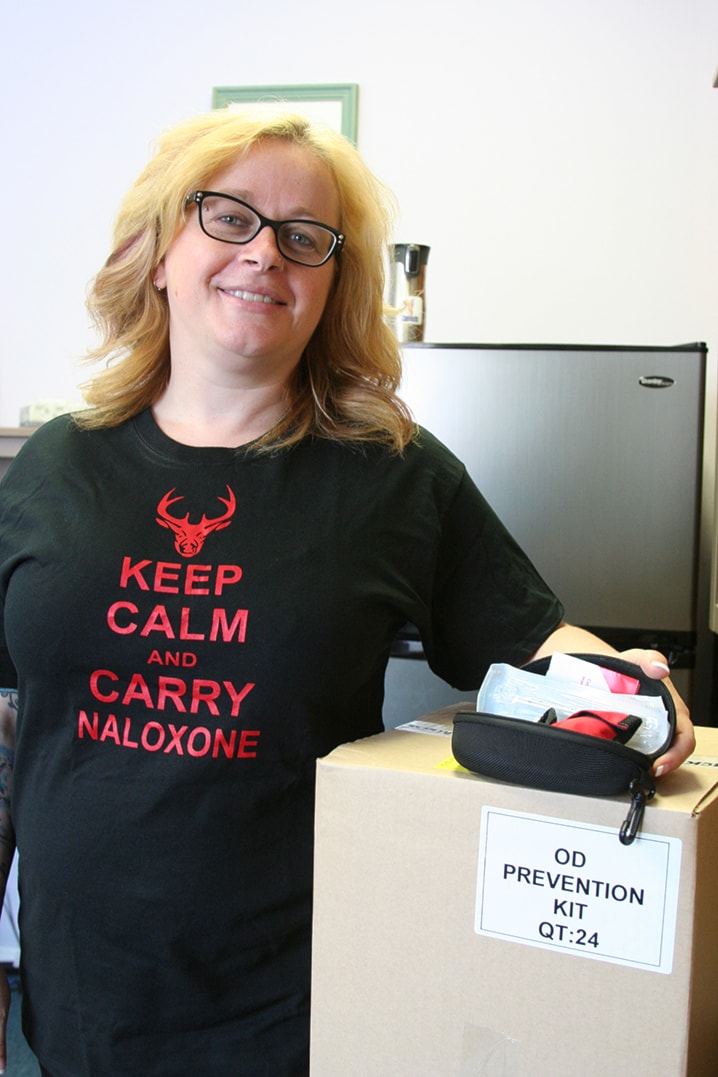Turning Point has been saving lives with take-home naloxone kits for just over one year with 130 known opioid overdoses reversed.
On July 7, 2015, Turning Point (formerly Central Alberta AIDS Network) was one of eight agencies in Alberta to prescribe naloxone, train people to use the free injection kits, and distribute kits when the province first made them available in response to the rise in fentanyl overdoses.
Fentanyl has been showing up unexpectedly in other street drugs and at about 100 times stronger than morphine, even small amounts of fentanyl can be deadly.
Now several pharmacies in Red Deer and across Central Alberta are making the kits available without a prescription. Some walk-in clinics also provide kits.
As of last week, Turning Point had given out 574 kits to those at risk of overdosing and concerned friends and family.
Last month, they handed out an average of three kits per day.
Jennifer Vanderschaeghe, Turning Point executive director, said now the province is looking at making naloxone nasal spray available.
“For sure it’s really exciting. If Alberta Health chooses to make them available, and funds them for use in our program, that would be spectacular,” Vanderschaeghe said.
“The spray itself is substantially more expensive, but is way easier to use and because it’s way easier to use, more people are likely to use it.”
Another way to help save lives is for the federal government to pass the Good Samaritan Drug Overdose Act to provide immunity for drug possession to anyone who seeks medical or police assistance for themselves or another person following an overdose.
Naloxone, which is injected intramuscularly, keeps people breathing until paramedics arrive. It’s possible for a person to lapse into an overdose again once naloxone wears off so medical attention is required.
She said often people don’t want to call 911 because police may put people under arrest.
“(The role of police) in that room is to do security for EMS. What we know is they often do their other job which is to arrest people and detain people so it’s causing people to not call 911.
“That policy and that practice is causing substantial health issues.”
She said according to Turning Point’s data on 99 drug reversals, an ambulance was called for only 27 overdoses mostly because people were worried about police involvement.
“It really should be 100 per cent.”
Alberta’s naloxone program started as a pilot project and one of the results has been the chance to have more open conversations in the community about drugs and to educate people about harm reduction and local services, she said.
“I think we’re having really authentic conversations with people who use drugs about their drug use and about their risks.”
She said there’s also more discussion about the need for substitution therapy and addictions treatment, not just detox, in situations where doctors over-prescribe, get caught, then cut patients off.
“(Patients) are actually forced to get their drugs through the street and they become incredibly more vulnerable to overdose and to other issues like crime.”
Vanderschaeghe said she hopes to receive more funding for more staff time for the naloxone program at Turning Point so more people can receive the help they need.
“We’ve had four times where the staff have had to use naloxone on site. We had one overdose in June where someone was overdosing across the street.
“We’re pretty sure that’s happening because they know we have naloxone available in the office. They don’t have a kit and they trust we’ll be able to give them a kit and help them.”
szielinski@www.reddeeradvocate.com
